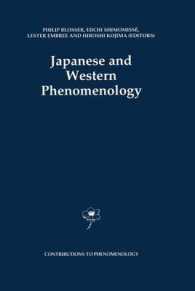Full Description
Military operations produce a great deal of trash in an environment where standard waste management practices may be subordinated to more pressing concerns. As a result, ground forces have long relied on incineration in open-air pits as a means of getting rid of refuse. Concerns over possible adverse effects of exposure to smoke from trash burning in the theater were first expressed in the wake of the 1990-1991 Gulf War and stimulated a series of studies that indicated that exposures to smoke from oil-well fires and from other combustion sources, including waste burning, were stressors for troops. In January 2013, Congress directed the Department of Veterans Affairs (VA) to establish and maintain a registry for service members who may have been exposed to toxic airborne chemicals and fumes generated by open burn pits.
Assessment of the Department of Veterans Affairs Airborne Hazards and Open Burn Pit Registry analyzes the initial months of data collected by the registry and offers recommendations on ways to improve the instrument and best use the information it collects. This report assesses the effectiveness of the VA's information gathering efforts and provides recommendations for addressing the future medical needs of the affected groups, and provides recommendations on collecting, maintaining, and monitoring information collected by the VA's Airborne Hazards and Open Burn Pit Registry.
Table of Contents
Front Matter
Summary
1 Introduction
2 Use of Registries in Environmental Health Research
3 The Airborne Hazards and Open BurnPit Questionnaire and Registry
4 Analysis Methods and Descriptive Statistics
5 Analysis and Interpretation of Exposures Data
6 Analysis and Interpretation of Registry Health Outcome Data
7 Findings, Conclusions, and Recommendations
Appendix A: Public Law 112-260
Appendix B: Workshop Agenda
Appendix C: Airborne Hazards and Open Burn Pit Registry Self-Assessment Questionnaire
Appendix D: Data Requested
Appendix E: Multivariate Model Results
Appendix F: Biographical Sketches of Committee Members and Staff
Contents
1 Front Matter; 2 Summary; 3 1 Introduction; 4 2 Use of Registries in Environmental Health Research; 5 3 The Airborne Hazards and Open BurnPit Questionnaire and Registry; 6 4 Analysis Methods and Descriptive Statistics; 7 5 Analysis and Interpretation of Exposures Data; 8 6 Analysis and Interpretation of Registry Health Outcome Data; 9 7 Findings, Conclusions, and Recommendations; 10 Appendix A: Public Law 112-260; 11 Appendix B: Workshop Agenda; 12 Appendix C: Airborne Hazards and Open Burn Pit Registry Self-Assessment Questionnaire; 13 Appendix D: Data Requested; 14 Appendix E: Multivariate Model Results; 15 Appendix F: Biographical Sketches of Committee Members and Staff








